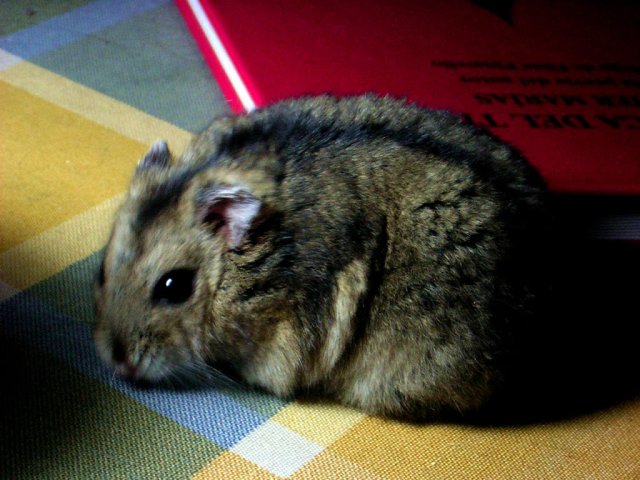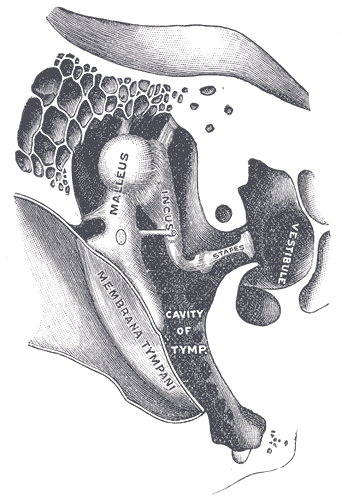|
Gambian Pouched Rat
The Gambian pouched rat (''Cricetomys gambianus''), also Common name, commonly known as the African giant pouched rat, is a species of nocturnal pouched rat of the giant pouched rat genus ''Cricetomys'', in the Family (biology), family Nesomyidae. It is among the largest Muroidea, muroids in the world, growing to about long, including the tail, which makes up half of its total length. It is widespread in sub-Saharan Africa, ranging from Senegal to Kenya and from Angola to Mozambique (although it is absent from much of the Democratic Republic of the Congo, where Emin's Pouched Rat, Emin's pouched rat is present) from sea level to . The Gambian pouched rat is sometimes kept as a pet, but some have escaped from captivity and become an invasive species in Florida. In the United States, the Centers for Disease Control and Prevention (CDC) and the Food and Drug Administration (FDA) now ban the importation of this species because it is blamed for the 2003 Midwest monkeypox outbreak, 200 ... [...More Info...] [...Related Items...] OR: [Wikipedia] [Google] [Baidu] |
George Robert Waterhouse
George Robert Waterhouse (6 March 1810 – 21 January 1888) was an English natural history, naturalist. He was a keeper at the department of geology and later curator of the Zoological Society of London's museum. Early life George was born in Somers Town to James Edward Waterhouse and Mary Newman. His father was a solicitor's clerk and an amateur entomologist. He was the brother of Frederick George Waterhouse, who also became a zoologist. George went to school at Koekelberg, near Brussels. He returned to England in 1824 and worked as an apprentice to an architect. Part of the work was in designing the garden of Charles Knight in the Vale of Health, Hampstead and the ornamentation for St. Dunstan's Church. Natural history George became interested in entomology through his father and he founded the Entomological Society of London along with Frederick William Hope in 1833 with himself as honorary curator. He became its president in 1849–50. He wrote articles for Knight's ''P ... [...More Info...] [...Related Items...] OR: [Wikipedia] [Google] [Baidu] |
Sea Level
Mean sea level (MSL, often shortened to sea level) is an mean, average surface level of one or more among Earth's coastal Body of water, bodies of water from which heights such as elevation may be measured. The global MSL is a type of vertical datuma standardised geodetic datumthat is used, for example, as a chart datum in cartography and Navigation, marine navigation, or, in aviation, as the standard sea level at which atmospheric pressure is measured to Calibration, calibrate altitude and, consequently, aircraft flight levels. A common and relatively straightforward mean sea-level standard is instead a long-term average of tide gauge readings at a particular reference location. The term ''above sea level'' generally refers to the height above mean sea level (AMSL). The term APSL means above present sea level, comparing sea levels in the past with the level today. Earth's radius at sea level is 6,378.137 km (3,963.191 mi) at the equator. It is 6,356.752 km (3,94 ... [...More Info...] [...Related Items...] OR: [Wikipedia] [Google] [Baidu] |
Omnivore
An omnivore () is an animal that regularly consumes significant quantities of both plant and animal matter. Obtaining energy and nutrients from plant and animal matter, omnivores digest carbohydrates, protein, fat, and fiber, and metabolize the nutrients and energy of the sources absorbed. Often, they have the ability to incorporate food sources such as algae, fungi, and bacteria into their diet. Omnivores come from diverse backgrounds that often independently evolved sophisticated consumption capabilities. For instance, dogs evolved from primarily carnivorous organisms (Carnivora) while pigs evolved from primarily herbivorous organisms (Artiodactyla). Despite this, physical characteristics such as tooth morphology may be reliable indicators of diet in mammals, with such morphological adaptation having been observed in bears. The variety of different animals that are classified as omnivores can be placed into further sub-categories depending on their feeding behaviors. Frug ... [...More Info...] [...Related Items...] OR: [Wikipedia] [Google] [Baidu] |
Termite
Termites are a group of detritivore, detritophagous Eusociality, eusocial cockroaches which consume a variety of Detritus, decaying plant material, generally in the form of wood, Plant litter, leaf litter, and Humus, soil humus. They are distinguished by their moniliform antennae and the soft-bodied, unpigmented worker caste for which they have been commonly termed "white ants"; however, they are not ants but highly Apomorphy and synapomorphy, derived cockroaches. About 2,997 extant species are currently described, 2,125 of which are members of the family Termitidae. Termites comprise the infraorder Isoptera, or alternatively the Taxonomic rank#All ranks, epifamily Termitoidae, within the order Blattodea (the cockroaches). Termites were once classified in a separate Order (biology), order from cockroaches, but recent phylogenetic studies indicate that they evolved from cockroaches, as they are deeply nested within the group, and the sister group to wood-eating cockroaches of t ... [...More Info...] [...Related Items...] OR: [Wikipedia] [Google] [Baidu] |
Muroid Rodent
The Muroidea are a large superfamily of rodents, including mice, rats, voles, hamsters, lemmings, gerbils, and many other relatives. Although the Muroidea originated in Eurasia, they occupy a vast variety of habitats on every continent except Antarctica. Some authorities have placed all members of this group into a single family, Muridae, due to difficulties in determining how the subfamilies are related to one another. Many of the families within the Muroidea superfamily have more variations between the families than between the different clades. A possible explanation for the variations in rodents is because of the location of these rodents; these changes could have been due to radiation or the overall environment they migrated to or originated in. The following taxonomy is based on recent well-supported molecular phylogenies. The muroids are classified in six families, 19 subfamilies, around 280 genera, and at least 1,750 species. Taxonomy *Family Platacanthomyidae ( spi ... [...More Info...] [...Related Items...] OR: [Wikipedia] [Google] [Baidu] |
Hamster
Hamsters are rodents (order Rodentia) belonging to the subfamily Cricetinae, which contains 19 species classified in seven genera. They have become established as popular small pets. The best-known species of hamster is the golden or Syrian hamster (''Mesocricetus auratus''), which is the type most commonly kept as a pet. Other hamster species commonly kept as pets are the three species of dwarf hamster, Campbell's dwarf hamster (''Phodopus campbelli''), the winter white dwarf hamster (''Phodopus sungorus'') and the Roborovski hamster (''Phodopus roborovskii''), and the less common Chinese hamster (''Cricetulus griseus''). Hamsters feed primarily on seeds, fruits, vegetation, and occasionally burrowing insects. In the wild, they are crepuscular: they forage during the twilight hours. In captivity, however, they are known to live a conventionally nocturnal lifestyle, waking around sundown to feed and exercise. Physically, they are stout-bodied with distinguishing features ... [...More Info...] [...Related Items...] OR: [Wikipedia] [Google] [Baidu] |
Hearing (sense)
Hearing, or auditory perception, is the ability to perceive sounds through an organ, such as an ear, by detecting vibrations as periodic changes in the pressure of a surrounding medium. The academic field concerned with hearing is auditory science. Sound may be heard through solid Solid is a state of matter where molecules are closely packed and can not slide past each other. Solids resist compression, expansion, or external forces that would alter its shape, with the degree to which they are resisted dependent upon the ..., liquid, or gaseous matter. It is one of the traditional five senses. Partial or total inability to hear is called hearing loss. In humans and other vertebrates, hearing is performed primarily by the auditory system: mechanical waves, known as vibrations, are detected by the ear and transduction (physiology), transduced into nerve impulses that are perceived by the brain (primarily in the temporal lobe). Like touch, audition requires sensitivity ... [...More Info...] [...Related Items...] OR: [Wikipedia] [Google] [Baidu] |
Olfaction
The sense of smell, or olfaction, is the special sense through which smells (or odors) are perceived. The sense of smell has many functions, including detecting desirable foods, hazards, and pheromones, and plays a role in taste. In humans, it occurs when an odor binds to a receptor within the nasal cavity, transmitting a signal through the olfactory system. Glomeruli aggregate signals from these receptors and transmit them to the olfactory bulb, where the sensory input will start to interact with parts of the brain responsible for smell identification, memory, and emotion. There are many different things which can interfere with a normal sense of smell, including damage to the nose or smell receptors, anosmia, upper respiratory infections, traumatic brain injury, and neurodegenerative disease. History of study Early scientific study of the sense of smell includes the extensive doctoral dissertation of Eleanor Gamble, published in 1898, which compared olfactory to ... [...More Info...] [...Related Items...] OR: [Wikipedia] [Google] [Baidu] |
Eyesight
Visual perception is the ability to detect light and use it to form an image of the surrounding environment. Photodetection without image formation is classified as ''light sensing''. In most vertebrates, visual perception can be enabled by photopic vision (daytime vision) or scotopic vision (night vision), with most vertebrates having both. Visual perception detects light (photons) in the visible spectrum reflected by objects in the environment or emitted by light sources. The visible range of light is defined by what is readily perceptible to humans, though the visual perception of non-humans often extends beyond the visual spectrum. The resulting perception is also known as vision, sight, or eyesight (adjectives ''visual'', ''optical'', and ''ocular'', respectively). The various physiological components involved in vision are referred to collectively as the visual system, and are the focus of much research in linguistics, psychology, cognitive science, neuroscience, and mole ... [...More Info...] [...Related Items...] OR: [Wikipedia] [Google] [Baidu] |
2003 Midwest Monkeypox Outbreak
An outbreak of human monkeypox (now known as mpox) began in May 2003 in the United States. By July, a total of 71 cases were found in six Midwestern states including Wisconsin (39 cases), Indiana (16), Illinois (12), Kansas (1), Missouri (2), and Ohio (1). The cause of the outbreak was traced to three species of African rodents ( Gambian pouched rat, dormice, rope squirrels) imported from Ghana on April 9, 2003, into the United States by an exotic animal importer in Texas. These were shipped from Texas to an Illinois distributor, who housed them with prairie dogs, which then became infected. The outbreak marked the first time monkeypox infection appeared in the Western Hemisphere. No deaths were reported, and no human-to-human transmission was found. All cases involved direct contact with infected prairie dogs. Electron microscopy and testing by polymerase chain reaction and immunohistochemistry were used to confirm the causative agent was human monkeypox.Centers for Disease ... [...More Info...] [...Related Items...] OR: [Wikipedia] [Google] [Baidu] |
Food And Drug Administration
The United States Food and Drug Administration (FDA or US FDA) is a List of United States federal agencies, federal agency of the United States Department of Health and Human Services, Department of Health and Human Services. The FDA is responsible for protecting and promoting public health through the control and supervision of food safety, tobacco products, caffeine products, dietary supplements, Prescription drug, prescription and Over-the-counter drug, over-the-counter pharmaceutical drugs (medications), vaccines, biopharmaceuticals, blood transfusions, medical devices, electromagnetic radiation emitting devices (ERED), cosmetics, Animal feed, animal foods & feed and Veterinary medicine, veterinary products. The FDA's primary focus is enforcement of the Federal Food, Drug, and Cosmetic Act (FD&C). However, the agency also enforces other laws, notably Section 361 of the Public Health Service Act as well as associated regulations. Much of this regulatory-enforcement work is ... [...More Info...] [...Related Items...] OR: [Wikipedia] [Google] [Baidu] |






